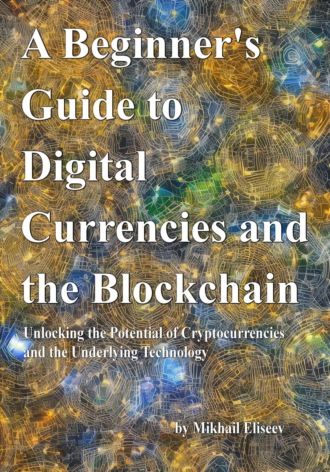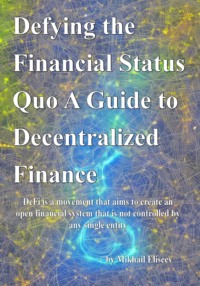
Полная версия
A Beginner's Guide to Digital Currencies and the Blockchain
Whether you are a beginner or an experienced investor, it is important to approach cryptocurrency investing with caution and to carefully consider your goals and risk tolerance before committing any money. By staying informed, diversifying your portfolio, and using reputable exchanges and wallets, you can increase your chances of success in the cryptocurrency market.
Part 4. "Blockchain Basics: A Practical Guide to the Technology Behind Cryptocurrency"
Blockchain technology has gained significant attention in recent years, largely due to its role in the development of cryptocurrency. But what exactly is blockchain, and how does it work? In this book, we will explore the basics of blockchain technology and its applications in the world of cryptocurrency.
Chapter 1: What is Blockchain?
At its most basic, a blockchain is a digital, decentralized ledger of transactions. It is called a "chain" because it consists of a series of interconnected blocks, each containing a record of multiple transactions. These blocks are linked together chronologically, forming a chain of blocks.
One of the key features of a blockchain is that it is distributed, meaning that it is not owned or controlled by any single entity. Instead, it is maintained by a network of computers, called nodes, that work together to validate and record transactions. This decentralized structure makes it difficult for any one party to alter the record of transactions, as it would require the consensus of the entire network.
Another important aspect of blockchain technology is that it is transparent and open. All transactions are recorded on the blockchain and are visible to anyone with access to the network. This transparency allows for greater accountability and trust among parties involved in a transaction.
Chapter 2: How Does Blockchain Work?
So how exactly does a blockchain work? When a transaction is made, it is broadcast to the network of nodes. These nodes then verify the transaction, checking to ensure that the sender has the necessary funds and that the transaction is valid.
Once a transaction has been verified, it is added to the block that is currently being processed. This block is then added to the chain of blocks, creating a permanent record of the transaction.
But what happens if someone tries to alter a transaction that has already been added to the blockchain? This is where the concept of "consensus" comes in. In order for a transaction to be added to the blockchain, it must be accepted by a majority of the nodes in the network. This ensures that any changes to the blockchain must be agreed upon by the majority, making it difficult for a single entity to manipulate the record.
Конец ознакомительного фрагмента.
Текст предоставлен ООО «ЛитРес».
Прочитайте эту книгу целиком, купив полную легальную версию на ЛитРес.
Безопасно оплатить книгу можно банковской картой Visa, MasterCard, Maestro, со счета мобильного телефона, с платежного терминала, в салоне МТС или Связной, через PayPal, WebMoney, Яндекс.Деньги, QIWI Кошелек, бонусными картами или другим удобным Вам способом.




